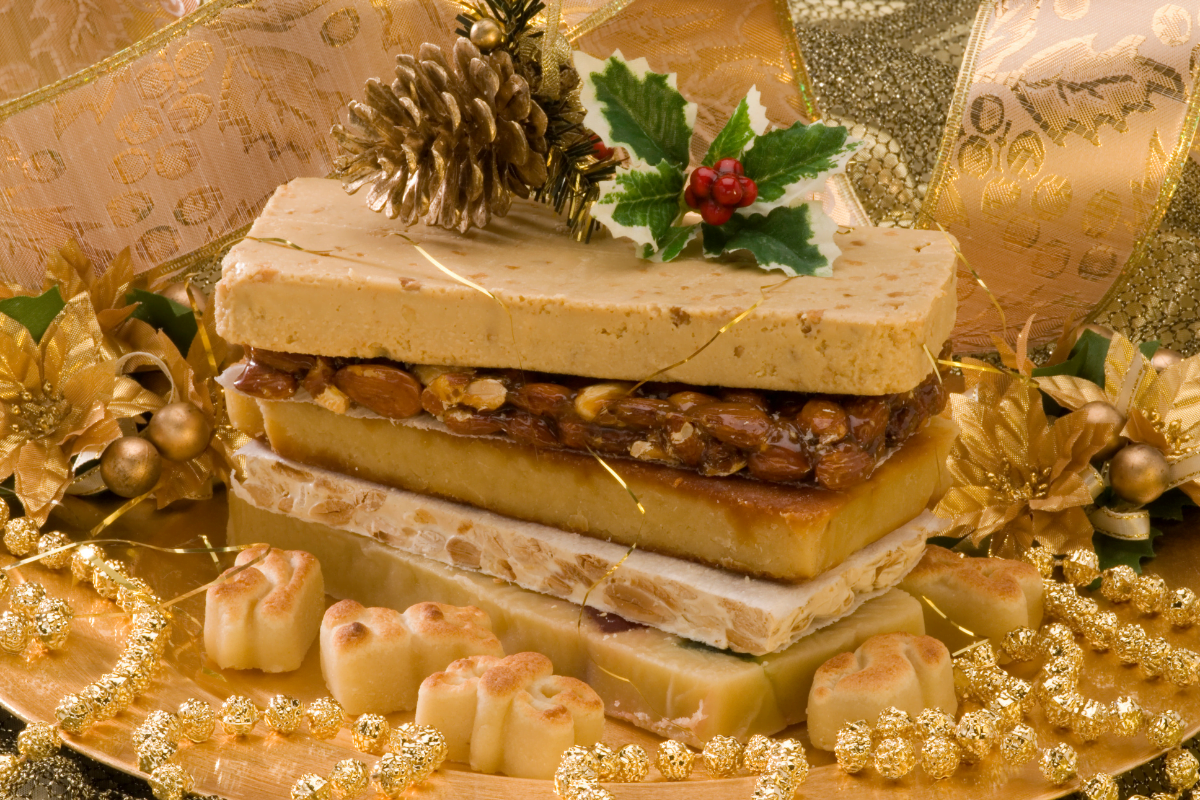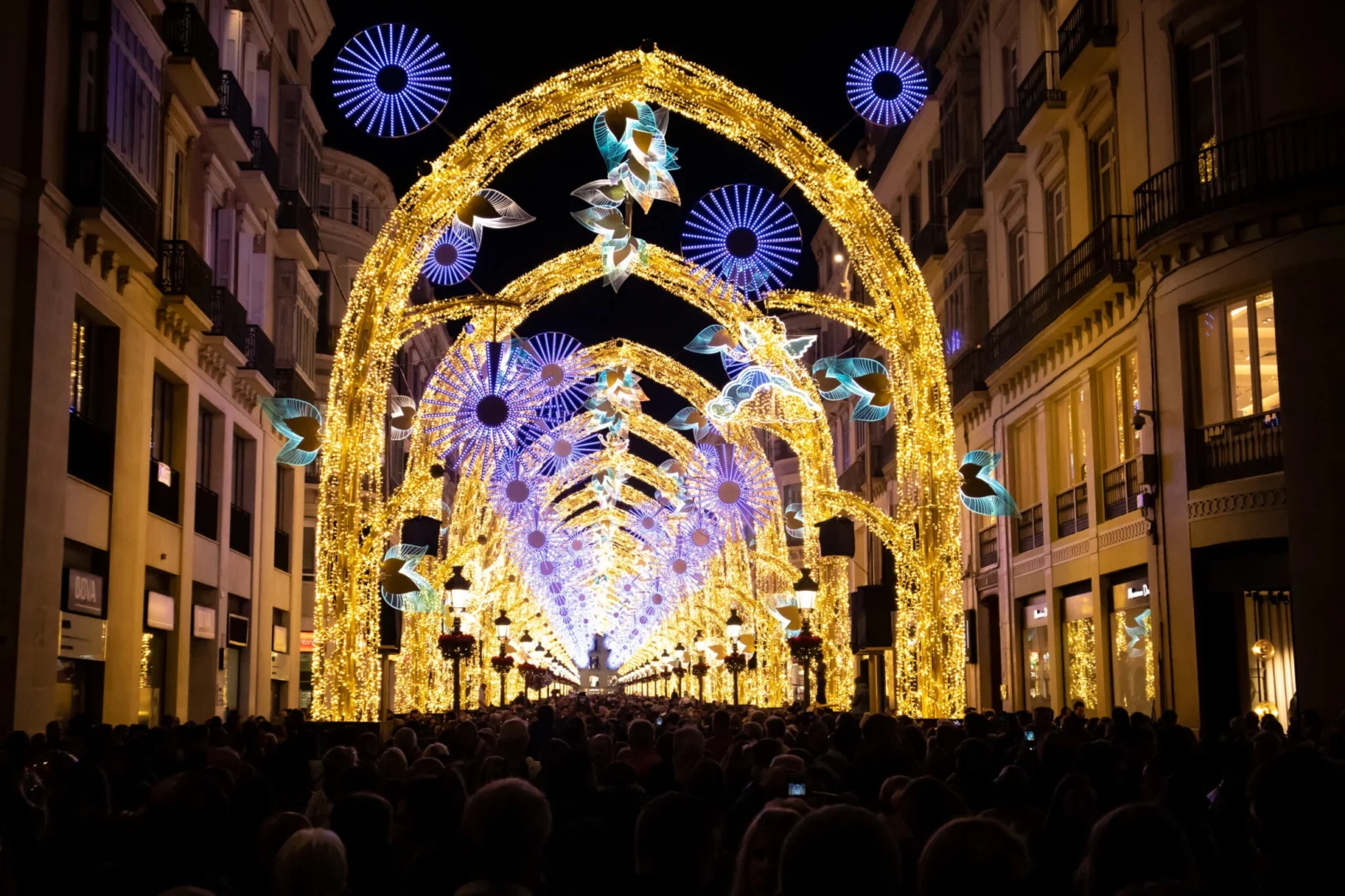December is undoubtedly a month that is marked by the approach of Christmas. Decorations shine in the streets of the cities and “Last Christmas” can be heard in the shops. If you are going to Spain then, be prepared for some surprising customs that you will not encounter in Poland.
Illumination like you’ve never seen before
This year, as many as four million LED bulbs have appeared in the historic centre of Málaga – on 500 streets, squares and roundabouts, as well as in landmarks. This is said to give the city the highest rate of selfies per square metre, reflecting the huge interest in illumination.
The illumination has been in place since 24 November and is complemented by musical accompaniment, and this year will feature songs such as: “Jingle Bells” performed by the Johann Strauss Orchestra, “We wish you a Merry Christmas”, “Carol of the bells” performed by Pentatonix, “Navidad Épica” or “Hacía Belén van una burra”. It simply has to be seen and felt!
World’s biggest Christmas lottery
On 22 December, the El Gordo Christmas lottery takes place in Spain. What adds to its uniqueness is that it is the largest lottery of its kind in the world, with billions of euros in the pot! The second dimension is typically symbolic, as for Spaniards El Gordo is the official moment when Christmas begins across the country.
The lottery has remained virtually unchanged since it was first held on 18 December 1812. Almost everyone in Spain takes part, and the results are announced at dawn on 22 December. They are accompanied by artistic performances in the form of the accompaniment of a choir singing the numbers drawn, and the whole event is televised. The ceremony continues until all the numbers have been drawn, which usually takes around … four hours.
A nativity scene, but different from the one in Poland
What distinguishes the inhabitants of the Iberian Peninsula is the tradition of decorating their homes at Christmas. In the same way that Poles have an attitude to Christmas trees, Spaniards have an attitude to… the Christmas crib. Every year, all over the country – in city streets, churches, shops, shopping malls and, of course, in homes – appear Belén, or nativity scenes depicting the lives of Christ, Mary, Joseph and the Three Kings.
For the Spaniards, the Portal de Belén is a special tradition, so every year they buy new figures and decorations to expand their nativity scenes – just as we buy new baubles and Christmas ornaments for the tree. Then, at dinner with the family, they gather together around the nativity scene and celebrate the festive season. However, the Christmas tree(árbol de Navidad) is also a must in Spain. It is on this that ornaments such as baubles, lights and, of course, the star of Bethlehem are hung.

April Fools’ Day in December?
In Poland, Prima Aprilis is traditionally celebrated on 1 April, but the Spanish have chosen a completely different day. On 28 December, El Día de los Santos Inocentes, or the Day of the Holy Innocents, is celebrated. The origins of this unusual holiday are very interesting. Well, it was intended to commemorate the young children who were killed on the orders of King Herod when he learned of the birth of Jesus Christ. The young child victims are called Santos Inocentes (Holy Innocents) because they were too young and too innocent to have committed any sins.
During El Día de los Santos Inocentes in Spain, everyone makes jokes(bromas) and pranks. As in Poland, the media are also in a joking mood and give false information. A very common prank – especially among the youngest – is sticking paper people, the so-called monigote, on other people’s backs.
Three Kings, presents of cake and… beans
Christmas presents are definitely what children look forward to at Christmas. It is no different in Spain. However, according to tradition, Spanish children received and still receive them a little later. While in Poland, Christmas presents are handed out by the Christmas star, in Spain they are brought by the Three Kings and only on 6 January!

Does this mean that children do not receive presents on 24 December? Nothing could be further from the truth! The figure of Father Christmas is today an international symbol of Christmas, but it is important to remember that every country in the world has its own traditions and there can always be an extra occasion to give gifts to loved ones – as in Spain.
On Epiphany Day, the typical cake in the form of a ring filled with whipped cream – Roscon de Reyes– is not to be missed. In the middle, there is always a figure of the king and a bean. The one who gets the bean pays for the cake the following year. On the other hand, the one who gets the figurine in his piece gets to wear the crown and be king that evening!
Spanish Christmas table
Carp, Kutia, dumplings with mushrooms, cabbage with peas or borscht are dishes without which we cannot imagine a traditional Christmas Eve in Poland. On the Iberian Peninsula, however, customs are different from those we know. The main reason is that Spaniards are not obliged to fast, so their customs may seem rather exotic. On the Spanish Christmas table you will find… broth, roast piglet and, of course, fish and all kinds of seafood, prawns and lobsters. It sounds like a menu in a gourmet restaurant, but for the Spanish, such dishes are an everyday occurrence. They simply serve the best of their cuisine on Christmas Eve.
It is also worth mentioning Spanish sweets, which cannot be missing from any Christmas table. While in Poland you will find sweet kutia, full of poppy seeds, nuts and honey, in Spain, turrón is served – a type of nougat, which is prepared with almonds, honey and hazelnuts. Polvorónes, or Andalusian Christmas cakes, are also very popular. They are prepared using a mixture of lard with ground almonds and cinnamon. They are then dusted with icing sugar and wrapped in paper. It’s a Christmas treat that can easily be found throughout Andalusia and Spain.

Visit Marbella and feel the magic of Christmas
On the Costa del Sol, the sun shines for more than 320 days a year and the Christmas and New Year period is no different. More and more of our compatriots are choosing to spend it in Spain, getting to know the local customs and traditions and enjoying the unique aura. Marbella’s microclimate means that between December and February, the average temperature fluctuates between 8-20℃ – depending on the time of day. This is conducive to exploring this wonderful region during a unique festive time.
If you are curious to know what other customs are in Spain and Andalusia at Christmas, read the next note. Merry Christmas!

